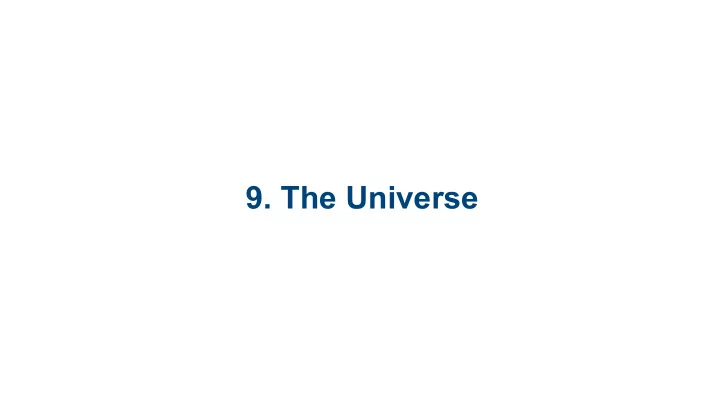

9. The Universe
9.1 The Universe and Solar System 9.2 Seasons and the Moon
9.1 The Universe and Solar System
What is a galaxy? A system of stars, star systems (like our solar system), dust, and any other objects within range of the star systems gravitational pull. Ex. The Whirlpool Galaxy
What are stars? Huge masses of plasma with large amounts of energy and gravity.
At the core of stars is hydrogen. Under the intense heat and pressure, the protons form helium, gamma rays, positrons, and neutrinos, some of which can slip out of holes in a stars magnetic field.
The Big Bang Describes the birth of our universe as a massive explosion. A very small area of highly compacted matter and energy began an explosive expansion process, that some speculate is still happening today – though at a much slower rate.
The sun is a mid-size star that, like other stars, emits heat and light energy. The sun is about 10 times more massive than Jupiter, and about 109 times larger than earth’s diameter.
Sunspots are due to low temperatures compared with the surrounding surface Scientists estimate the age of the Sun to be about 4.6 billion years old
Our solar system consists of planets, moons, and asteroids that orbit the sun. A planet is a celestial body that orbits the sun, has enough mass for its self- gravity to assume a nearly spherical shape, and has cleared the area around its orbit.
The eight planets, in order from the sun are: Mercury Venus Earth Mars Jupiter Saturn Uranus Neptune
Planet Type Size Distance from Moons sun Mercury Terrestrial 3,000 mi 36 million mi 0 Venus Terrestrial 8,000 mi 67 million mi 0 Earth Terrestrial 8,000 mi 93 million mi 1 Mars Terrestrial 4,000 mi 142 million mi 2 Jupiter Gas Giant 89,000 mi 483 million mi 67 Saturn Gas Giant 75,000 mi 885 million mi 62 Uranus Gas Giant 32,000 mi 1,787 million mi 27 Neptune Gas Giant 31,000 mi 2,800 million mi 13
Why isn’t Pluto a planet (as of 2006)? A planet is a celestial body that orbits the sun, has enough mass for its self-gravity to assume a nearly spherical shape, and has cleared the area around its orbit.
Planets farther from the sun are larger, have more mass, and are colder than those that are closer. Terrestrial planets are composed of solid elements. Gas Giants are composed of mostly gases with huge atmospheric layers.
9.2 Seasons and the Moon
The sun is a mid-size star that, like other stars, emits heat and light energy. The sun is about 10 times more massive than Jupiter, and about 109 time large than earth’s diameter.
Earth tilts on its axis at an angle of 23.5 degrees as it rotates around the sun. This tilt, along with rotation, creates what we know as “seasons”.
For half of its yearly orbit, the northern hemisphere is tilted toward the sun and experiences “summer” For the other half, the southern hemisphere experiences “summer” while the northern half experiences “winter”.
North Pole W S South Pole
North Pole S W South Pole
The moon makes a complete orbit around the earth every 29 days, which is the origin of our months. One day is the time it takes earth to rotate on its axis once. In one orbit we can observe several moon phases.
First Quarter Waxing Waxing Gibbous Crescent Earth Full New Waning Waxing Crescent Gibbous Third Quarter
Recommend
More recommend